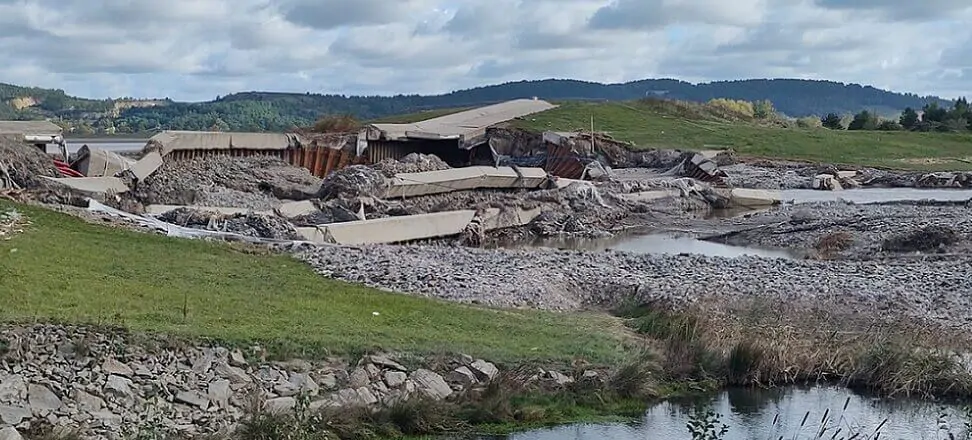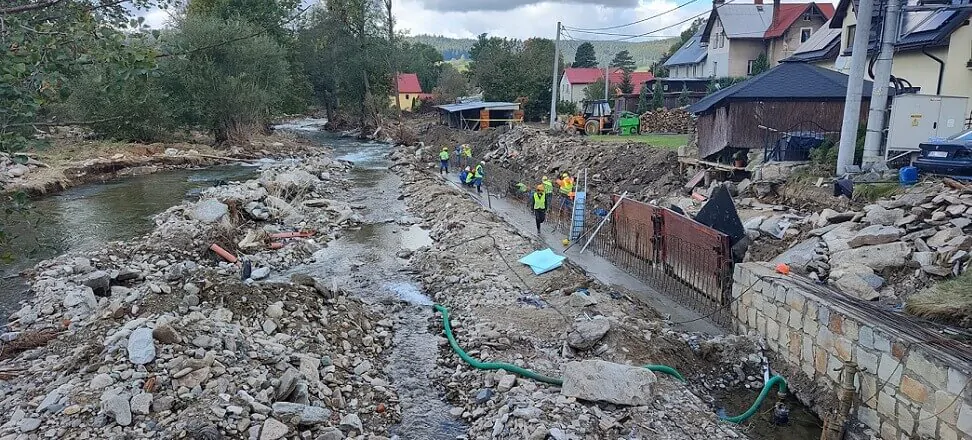Issue 20/2024, News
Restoring safety after the flood: key investments in Lower Silesia
The recent floods that struck Lower Silesia caused significant damage—flooded homes, damaged roads, and infrastructure destruction became a daily reality for the region’s residents. The effects of this natural disaster not only shook the local community but also highlighted the need to intensify repair and preventive measures aimed at safeguarding against future threats. In response to the crisis, Wody Polskie, in cooperation with local governments, has initiated a series of projects. With government support and local authority initiatives, 182 projects related to flood protection infrastructure reconstruction are underway in Lower Silesia and are expected to be completed by the end of this year.
Cooperation to secure Lower Silesia
In light of the increasing number of extreme weather events, Wody Polskie and regional governments have undertaken extensive measures to not only mitigate the effects of recent floods but also to reduce the risk of future disasters.
“We are securing areas at the highest risk of flooding, and our efforts are not limited to just clearing the damage,” explains the spokesperson for the Regional Water Management Authority (RZGW) in Wrocław. “Our priority is a comprehensive approach to flood protection, which includes long-term and preventive actions,” they add.

A comprehensive repair plan, 182 projects by the end of 2024
As part of the ongoing efforts, Wody Polskie is implementing 182 projects in Lower Silesia focused on the reconstruction, modernization, and strengthening of flood protection infrastructure. These investments include modernizing flood embankments, reinforcing riverbanks, repairing hydrotechnical devices, and clearing riverbeds by removing blockages. The planned actions involve both immediate repairs and long-term solutions aimed at minimizing the risk of future floods.
Currently, RZGW in Wrocław is managing 150 projects in Lower Silesia and neighboring provinces, with a total budget exceeding 73 million PLN. In Lower Silesia alone, 103 projects worth over 60 million PLN are underway, while in the Opole province, 24 projects valued at around 10 million PLN are being implemented. Additionally, 23 projects with a total value of over 1 million PLN are planned for the Lubusz province.
Meanwhile, RZGW in Gliwice is executing 32 projects worth over 2 million PLN. So far, 18 of these projects have been completed at a cost of 400,000 PLN, and 14 projects with a budget exceeding 1.7 million PLN are still ongoing. In the area managed by the Gliwice RZGW, the projects include seven tasks in the Opole province and seven in the Silesian province.
The new retention reservoir in Kątki on the Czarna Woda River
On October 30, 2024, in Wałbrzych, Wody Polskie and the local governments of Lower Silesia signed a letter of intent to build a dry flood control reservoir, Kątki, on the Czarna Woda River. The project aims to collect excess rainwater during intense rainfall, reducing the risk of flooding in the most vulnerable regions. The planned Kątki reservoir, with a capacity of over 1 million cubic meters of water, will significantly reduce flood waves, providing protection for residents of the municipalities of Marcinowice, Sobótka, and Kąty Wrocławskie. The reservoir will feature a 390-meter-long earth dam, allowing controlled water retention up to a capacity of 1.225 million cubic meters and flooding an area of over 50 hectares during high water levels.
Investments on the Biała Lądecka River and Morawka Stream worth 35 million PLN
One of the largest projects in Lower Silesia involves clearing the Biała Lądecka River and the Morawka Stream. Under agreements signed by Wody Polskie, over 35 million PLN will be allocated to improving the flow capacity of these watercourses. The work will include removing natural and artificial blockages, widening and deepening riverbeds, reinforcing riverbanks, and modernizing hydrotechnical infrastructure.
In addition, protective works are planned, including the construction of new and modernization of existing retaining walls and culverts, which play a critical role in protecting coastal areas from flooding during heavy rainfall. The project will also involve removing aquatic vegetation and bottom sediments.
main photo: Wody Polskie









